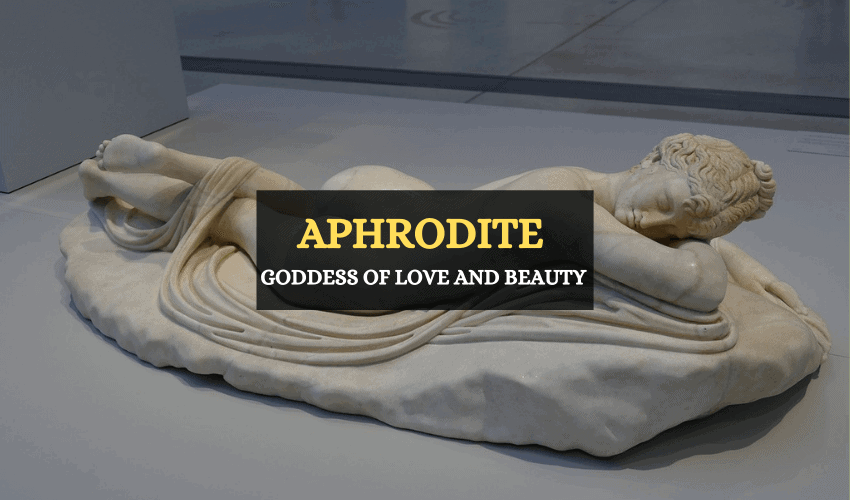
Table of Contents
The goddess of love and beauty, Aphrodite (known as Venus in Roman mythology) is one of the most recognizable names to have come from Greek mythology. In all accounts of Aphrodite, she is described as being of a woman of stunning appearance. She was irresistible to mortals and gods alike, who all fell in love with her. Naturally, many of the myths concerning Aphrodite focus on her beauty, lustful nature, and her many lovers.
Who Is Aphrodite?
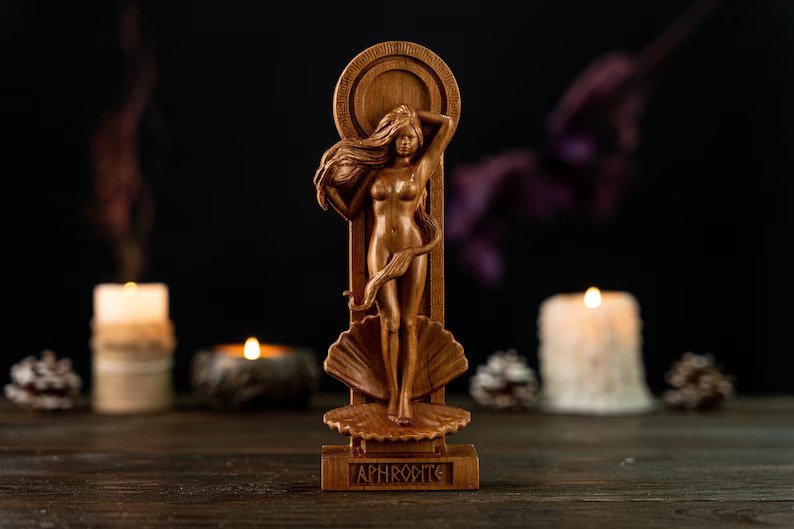
According to Hesiod’s Theogony, Aphrodite was ‘born’ on the island of Cyprus. As the myth goes, the Titan Cronus castrated his father Uranus and threw his genitals in the sea. From the foam of the water of Paphos, Aphrodite emerged, fully formed. In fact, the name Aphrodite comes from the Ancient Greek word aphros, meaning sea foam, which aligns with this story. This myth emphasizes Aphrodite’s primordial nature as a goddess of love and beauty.
In contrast, Homer’s “Iliad” describes Aphrodite as the daughter of Zeus, the king of the gods, and Dione, a Titaness and sometimes considered an oracular goddess at Dodona. This lineage situates Aphrodite more within the Olympian family structure common to many Greek gods and goddesses.
The idea of a goddess of love, beauty, and fertility is a common one across many different cultures, and it’s likely that Aphrodite’s character and worship drew on several earlier traditions. Some scholars believe that the worship of Aphrodite came from the Middle East, as many of the attributes given to her recall those of Middle Eastern goddesses, including Astarte and Ishtar. These goddesses shared many characteristics with Aphrodite, including their connections to love, beauty, sex, and fertility.
The ancient Greeks came into contact with these Eastern cultures through trade and colonization, and it’s very likely that they adopted and adapted elements of these goddesses into their own pantheon. Aphrodite’s worship was particularly prominent in Cyprus and Cythera, areas with strong Phoenician influence.
Aphrodite’s Beauty
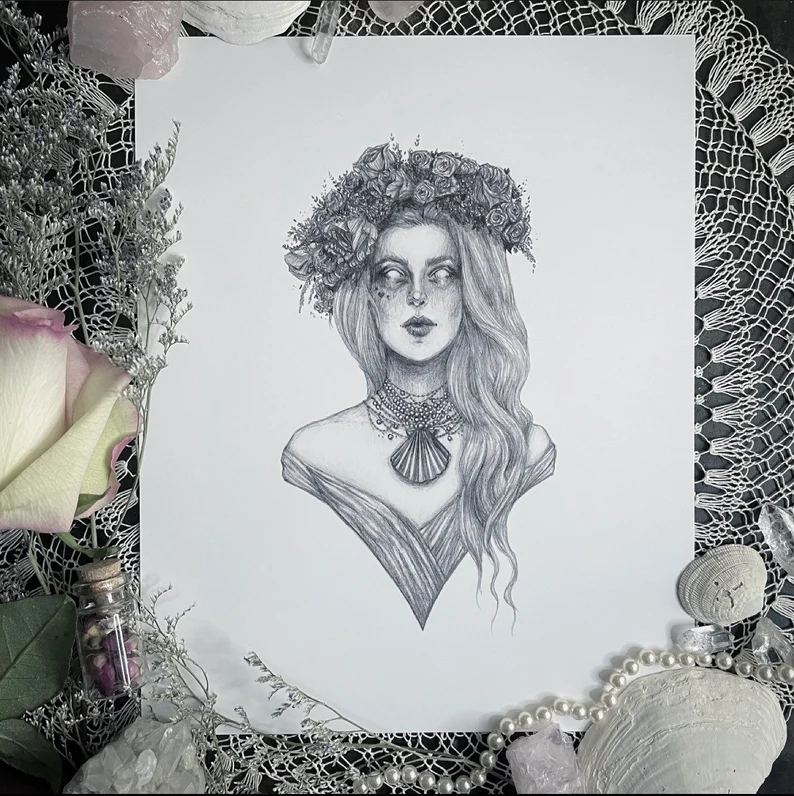
Aphrodite was so beautiful that the gods feared that there would be a rivalry amongst them because of her beauty. Many were fighting over her to win her hand in marriage.
To solve this issue, Zeus had her married off to Hephaestus, a stable and hard-working god, but also the most unsightly of them all He had physical deformities and wasn’t highly regarded in a society that worshipped beauty and the perfect human form.
The god of metalworking, fire, and stone masonry, Hephaestus had not even been considered a serious contender for Aphrodite. So, it took everyone by surprise, probably including Aphrodite herself, when she was paired off with him.
Aphrodite’s Lovers
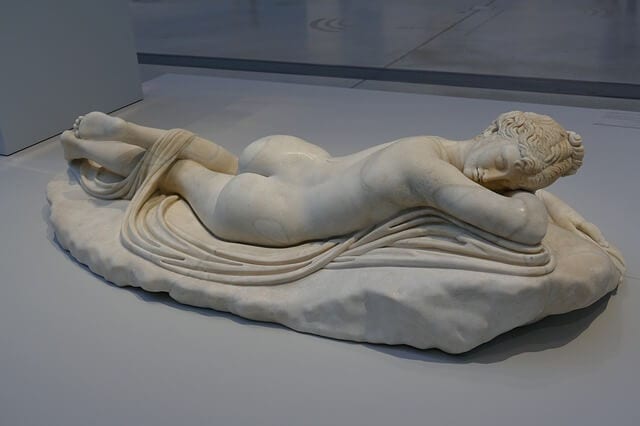
Although she was bound to Hephaestus through marriage, Aphrodite took on many lovers, both gods and mortals. She was probably the most promiscuous of the Olympian goddesses, which is in line with her role.
1. Aphrodite and Ares
Aphrodite had an affair with Ares, the god of war. However, Helios the sun god, caught the lovers and informed Hephaestus of their tryst. Angered, Hephaestus designed a fine bronze net that would trap them within it when they next lay together. The lovers were only freed after the other gods laughed at them and Poseidon paid for their release.
2. Aphrodite and Poseidon
Poseidon was also a lustful god who had many affairs, including Medusa, Demeter, and Amphitrite . Once, Poseidon saw Aphrodite naked, and falling under the spell of her beauty, he desired her. Aphrodite and Poseidon had one daughter together, named Rhode.
3. Aphrodite and Hermes
Hermes is a god who doesn’t have a lot of consorts. As the winged god, he was often traveling around as the messenger of the gods. However, he found time to be with Aphrodite and they had an offspring named Hermaphroditus.
4. Aphrodite and Adonis
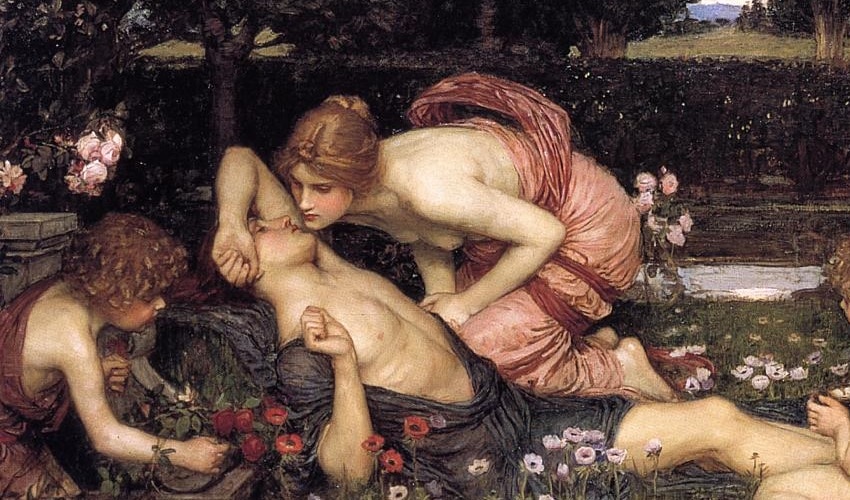
Perhaps her most famous lover, Aphrodite and Adonis have a sad love tale. Aphrodite once found a baby boy that she took to the underworld. She asked Persephone to take care of him and after some time she visited the boy who had grown up to become a handsome man, Adonis. Aphrodite asked if she could take him back, but Persephone wouldn’t allow it.
Zeus decided to settle the dispute by dividing Adonis’ time between the goddesses, but it was ultimately Aphrodite that Adonis would choose. He paid for it with his life, dying in her arms after either Ares or Artemis sent a wild boar to kill him. As the story goes, anemones sprang from where the blood of Adonis fell.
6. Aphrodite and Anchises
Anchises was a mortal shepherd who Aphrodite fell in love with. The goddess pretended to be a mortal virgin, seduced him, slept with him, and bore him a son, Aeneas. He paid for this affair with his sight when Zeus struck him with a thunderbolt.
Aphrodite’s Wrath and Jealousy
Aphrodite was a generous and kind goddess to those who respected and revered her, but like the other gods, she didn’t take slights lightly. There are several myths that outline her anger and vengeance against those who slighted her. She would also do anything to get what she wanted. These myths showcase these characteristics of Aphrodite.
1. The Judgment of Paris
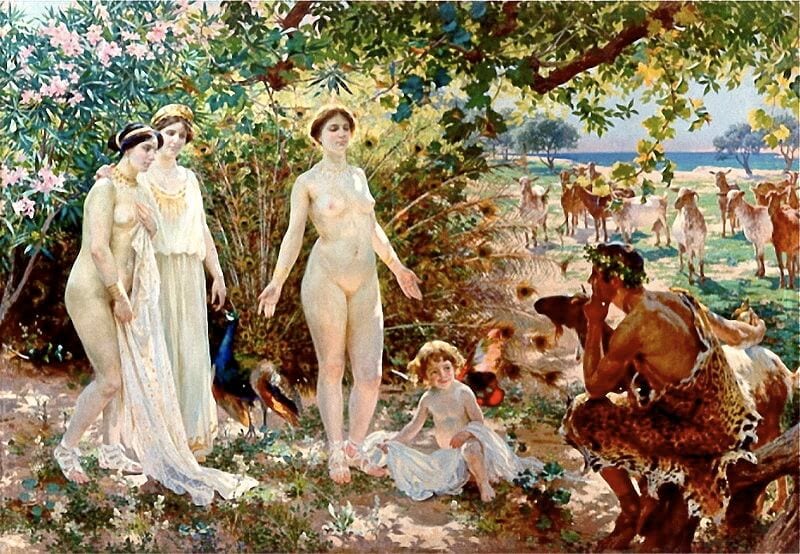
Aphrodite was one of the three goddesses, along with Hera and Athena, who were embroiled in the dispute that led to the Trojan War. Eris, the goddess of discord, threw a golden apple inscribed with “to the fairest” among the gods. Hera, Athena, and Aphrodite all claimed it. Paris, a prince of Troy, was chosen to judge who was the fairest. Each goddess attempted to bribe him: Hera offered him power, Athena offered wisdom and skill in battle, and Aphrodite offered the most beautiful woman in the world, Helen of Sparta. Paris chose Aphrodite, a decision that eventually led to the Trojan War. Aphrodite’s wrath came to the fore during the war as she supported Paris and the Trojans and fought against the Greeks, who sided with Hera and Athena.
2. Aphrodite and Psyche
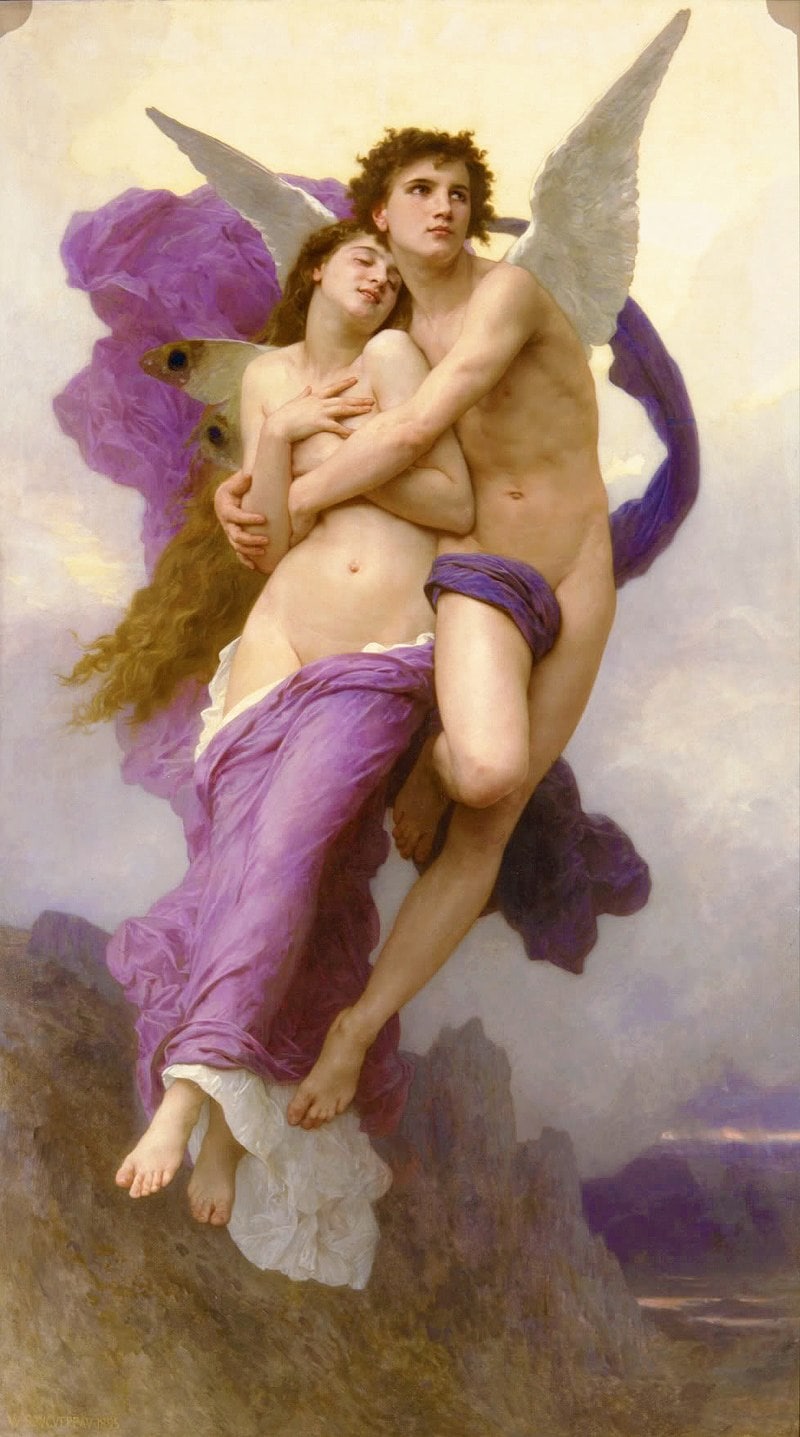
The story of Psyche illustrates another instance of Aphrodite’s jealousy and anger. Psyche was a mortal woman of extraordinary beauty, to the extent that people began to neglect the worship of Aphrodite herself. Enraged by this slight, Aphrodite sent her son Eros (Cupid) to make Psyche fall in love with the vilest creature on earth. Instead, Eros fell in love with Psyche himself, setting the stage for a series of trials that Aphrodite put Psyche through.
3. Hyppolytus
Aphrodite was not a goddess to be scorned or neglected. Hippolytus, the son of Theseus, devoted himself to the virgin goddess Artemis and disparaged Aphrodite’s power. Angered, Aphrodite caused his stepmother, Phaedra, to fall in love with him. When Hippolytus spurned Phaedra, she accused him of rape, leading to his father cursing and ultimately causing his death.
4. Eos and Ares
The Titaness Eos had a brief affair with Ares, even though Ares was Aphrodite’s lover. In retaliation, Aphrodite cursed Eos to be perpetually in love with an insatiable sexual desire. This caused Eos to abduct many men but to never be satiated.
5. Myrrha
When Myrrha, the daughter of the Assyrian king, failed to honor Aphrodite, the goddess was so incensed that she caused Myrrha to fall in love with her own father, leading to a tragic tale of deceit, transformation, and rebirth.
Aphrodite’s Symbols
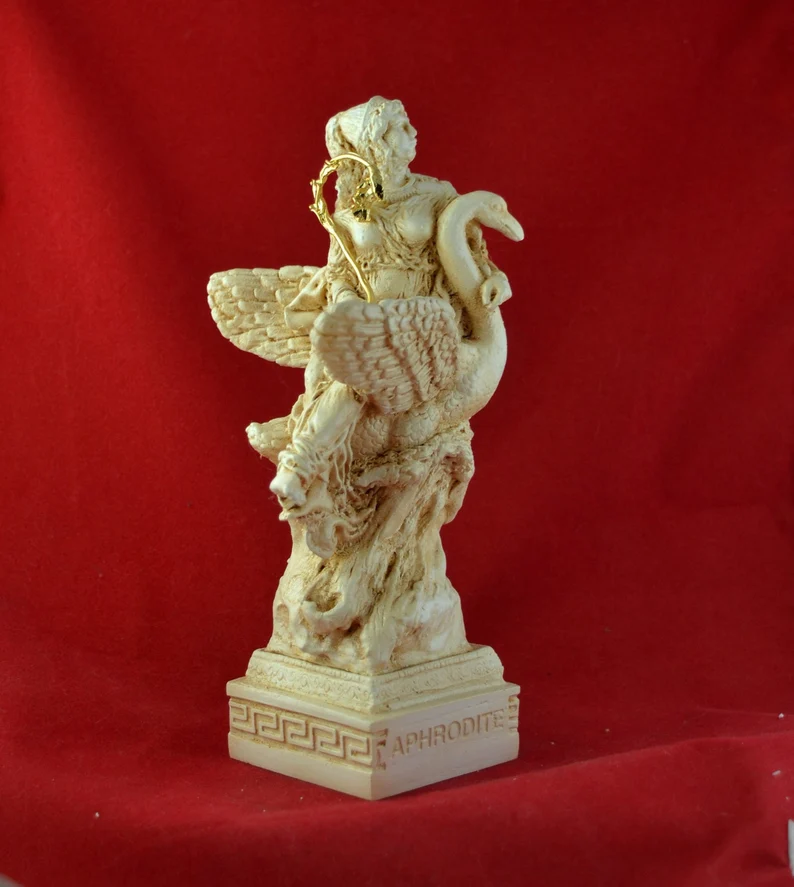
Aphrodite is associated with several symbols, many taken from the natural world. These include the following:
- Scallop Shell: This symbolizes Aphrodite’s birth from the sea. In one account, she was born fully grown from the sea foam that formed around the genitals of Uranus when they were thrown into the ocean by his son, Cronus. In classical art, Aphrodite is often depicted being carried to shore on a scallop shell.
- Pomegranate: As a symbol of fertility and abundance due to its many seeds, the pomegranate was also associated with Aphrodite’s aspects as a goddess of love, beauty, and procreation.
- Dove: The dove is a universal symbol of love and peace. Aphrodite’s association with doves may derive from her origins as a Near Eastern goddess of love, akin to the Semitic goddesses Astarte and Ishtar, both of whom were associated with doves.
- Sparrow: Aphrodite supposedly rides in a chariot pulled by sparrows, but why this symbol is important to her isn’t clear. One theory is that the sparrow symbolizes true love and a spiritual connection, not just lust, signifying the gentler side of the goddess.
- Swan: The swan is another bird associated with Aphrodite, possibly due to its grace and beauty or its connection to water.
- Dolphin: As a sea creature, the dolphin also represented Aphrodite’s maritime origins and was believed to be her sacred animal.
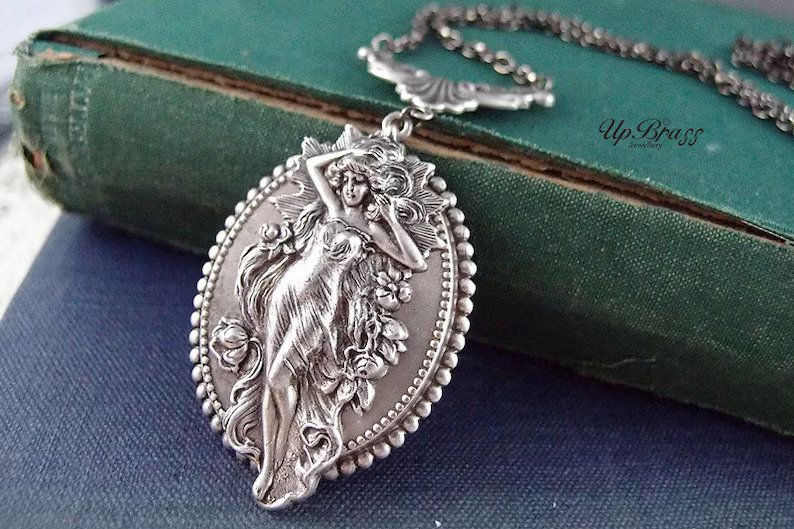
- Pearl: As a precious object created by oysters, the pearl symbolized Aphrodite’s beauty and her connection to the sea.
- Rose: The rose, particularly the red rose, is a symbol of love and passion. Aphrodite was often depicted adorned with roses, and the flower was considered sacred to her.
- Apple: The apple symbolizes desire and sensuality. It was the golden apple that Paris gave to Aphrodite, declaring her the most beautiful goddess and igniting the events that led to the Trojan War.
- Myrtle: Myrtle was a plant sacred to Aphrodite. It was a symbol of love and was used in love spells and potions. Myrtle wreaths were used in wedding ceremonies in ancient Greece.
- Girdle: In Greek mythology, Aphrodite had a magical girdle that made anyone she wished fall in love with her. It symbolizes seduction and irresistible attraction.
- Mirror: Aphrodite is often depicted with a mirror, symbolizing vanity, beauty, and self-awareness. The mirror, by reflecting our image, encourages self-realization and the acceptance of our own beauty.
Symbolism of Aphrodite
Aphrodite herself remains a powerful symbol of passion, romance, lust and sex. Today, her name is synonymous with these concepts. To call someone an Aphrodite is to suggest that they are irresistible, gorgeous, and have uncontrollable desire.
The English word aphrodisiac, meaning a food, drink or object that stimulates sexual desire, comes from the name Aphrodite.
Aphrodite in Art and Literature
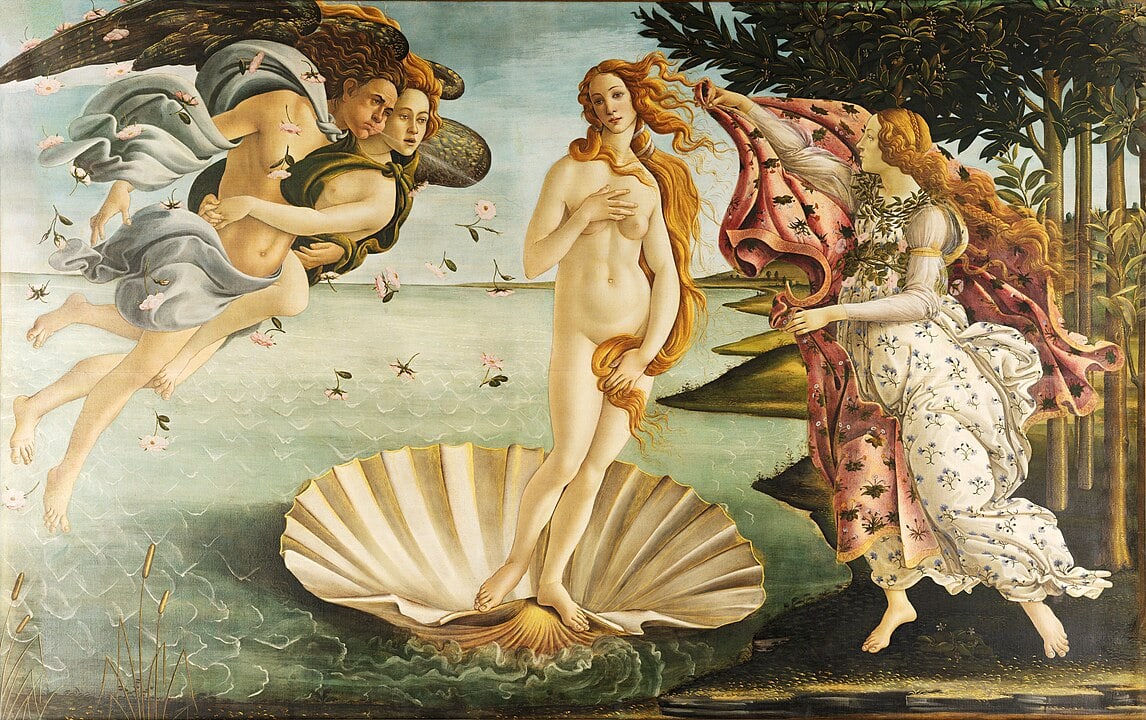
Aphrodite is well represented in art throughout the ages. She was most famously captured in Sandro Botticelli’s 1486 CE, the Birth of Venus, prominently displayed in the Uffizi Gallery in Florence, Italy. The judgment of Paris is also a popular subject in ancient Greek art.
Aphrodite is usually depicted clothed in Archaic and Classical Art with an embroidered band or girdle across her chest, which supposedly held her powers of seductive allure, desire, and love. It was only later during the 4th century BCE when artists started depicting her naked or semi-naked.
Aphrodite has been referenced in many important literary works, most notably Venus and Adonis by Shakespeare. More recently, Isabel Allende published the book Aphrodite: A Memoir of the Senses.
Aphrodite in Modern Culture
Aphrodite is one of the most popular of the Greek goddesses referenced in modern culture. Kylie Minogue named her eleventh studio album Aphrodite and the tour for the aforementioned album also displayed countless images tied to the goddess of beauty.
Katy Perry in her song “Dark Horse”, asks her lover to “make me your Aphrodite.” Lady Gaga has a song titled “Venus” with lyrics referencing the famous painting The Birth of Venus which shows the goddess covering herself while standing over a seashell.
In the mid-20th century, a neo-pagan religion was founded with Aphrodite at its center. It’s known as the Church of Aphrodite. In addition, Aphrodite is an important goddess in Wicca and is often invoked in the name of love and romance.
Aphrodite Facts
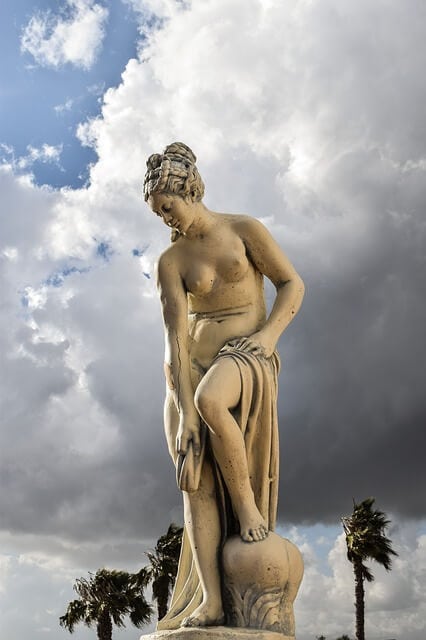
Zeus and Dione or Uranus’ severed genitals.
Aphrodite’s list of siblings and half-siblings is long, and includes the likes of Apollo, Ares, Artemis, Athena, Helen of Troy, Heracles, Hermes and even the Erinyes (Furies).
The most notable are Poseidon, Ares, Adonis, Dionysus and Hephaestus.
Yes, she was married off to Hephaestus, but did not love him.
She had several children with different gods and mortals, including Eros, Aeneas, The Graces, Phobos, Deimos and Eryx.
She was immortal and could cause mortals and gods to fall in love. She owned a belt which, when worn, caused others to fall in love with the wearer.
Aphrodite is known as the goddess of love, , beauty, marriage and fertility.
Aphrodite was portrayed as a stunning woman of breathtaking beauty. She was often depicted nude in artwork.
She wasn’t a fighter and this is clear during the Trojan War when she is asked by Zeus to sit it out due to getting hurt. However, she is a schemer and with great power in controlling others.
She was often jealous of beautiful and attractive women and didn’t take slights lying down. She also cheated on her husband and didn’t respect him.
In Brief
Alluring and beautiful, Aphrodite remains a symbol of a stunning woman who understands her beauty and knows how to use it get what she desires. She continues to be a significant figure in neo-Paganism and modern pop culture. Her name is among the most popular of all the figures of Greek mythology.
Related articles
Greek Goddess Athena: Her Origins, Symbols, and Influence
Demeter: Greek Goddess of Harvest and Her Relevance Today
Persephone: Greek Goddess of Spring and the Underworld
Mnemosyne – Titan Goddess of Memory in Greek Mythology
Iris – The Story of The Greek Goddess of the Rainbow
Hestia – The Greek Goddess of the Hearth








